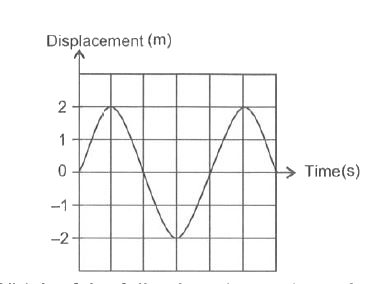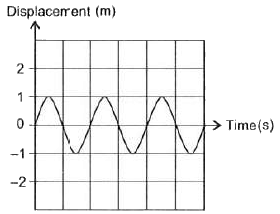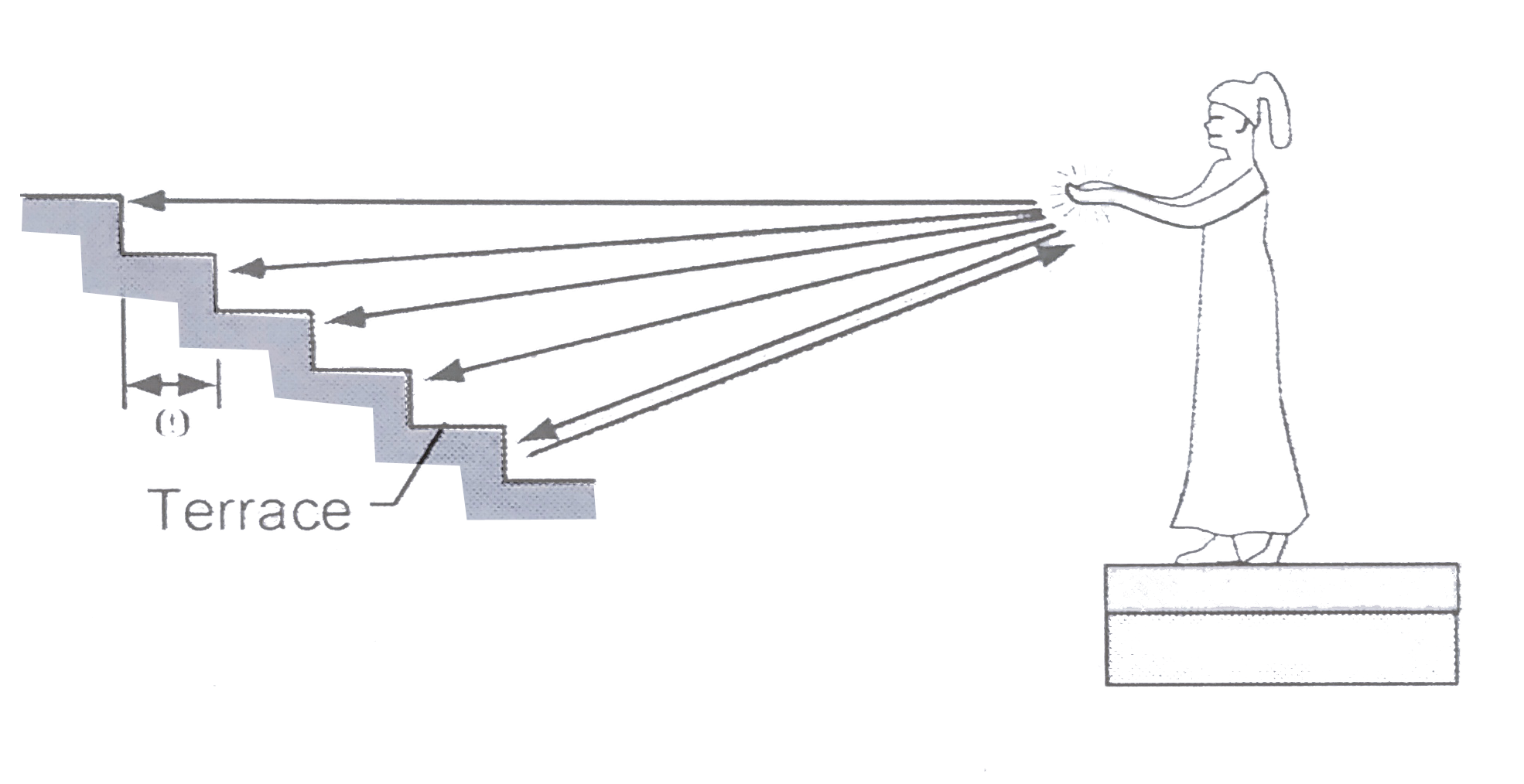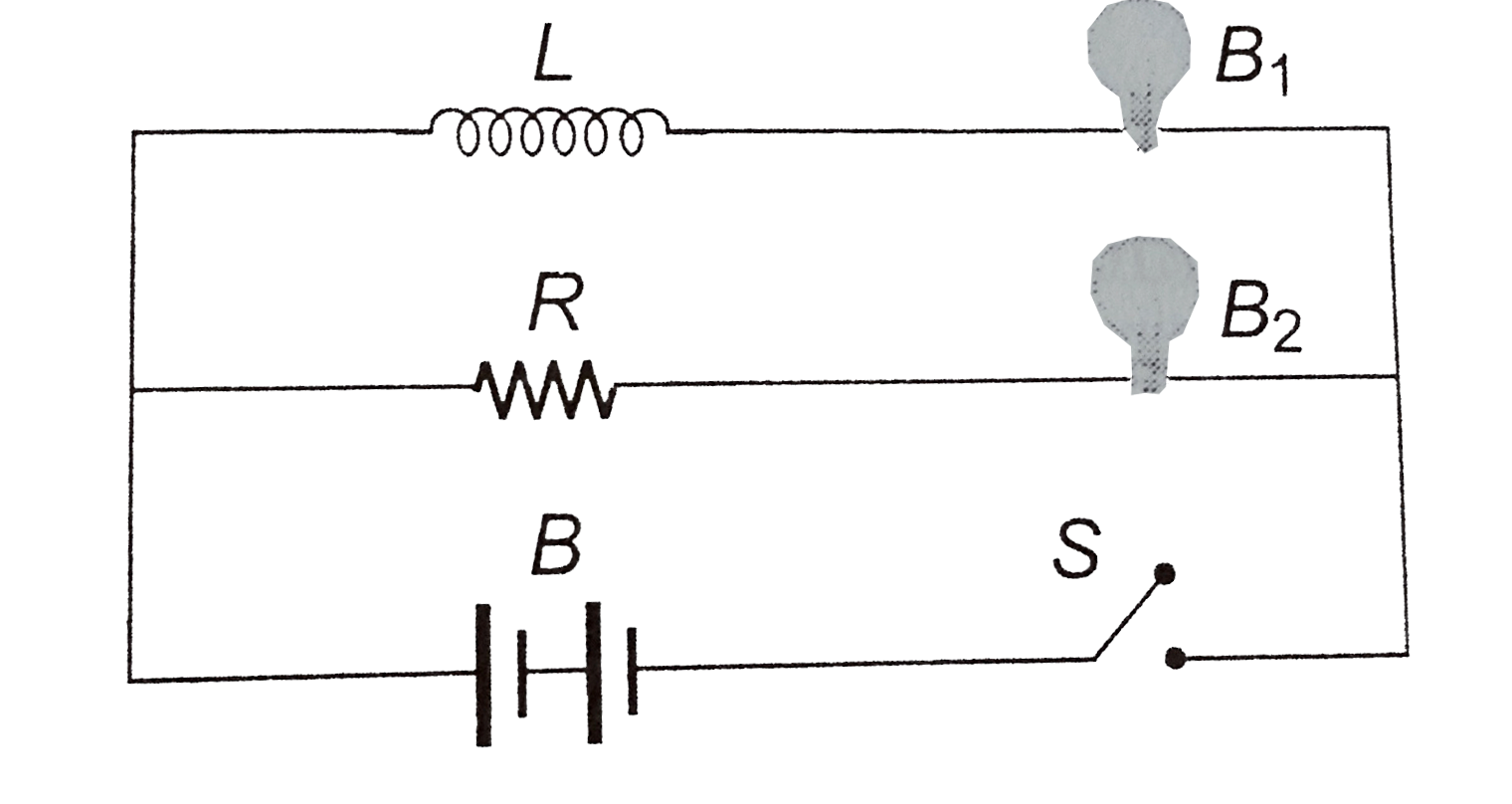A microphone is connected to a cathode ray oscilloscope. A loudspeaker giving a single note is switch on . The trace shown in the figure appears on the screen. 
Which of the following the softer but same frequency note of the given note ?




The correct Answer is:A
The sound wave having less amplitude will be softer.
Topper's Solved these Questions
- SOUND BOOK - SCIENCE OLYMPIAD FOUNDATION CHAPTER - SOUND EXERCISE - ACHIEVERS SECTION (HOTS)
5 Videos
- NSO QUESTION PAPER 2020 SET 1BOOK - SCIENCE OLYMPIAD FOUNDATION CHAPTER - NSO QUESTION PAPER 2020 SET 1EXERCISE - ACHIEVERS SECTION
2 Videos
- WORK AND ENERGYBOOK - SCIENCE OLYMPIAD FOUNDATION CHAPTER - WORK AND ENERGYEXERCISE - ACHIEVERS SECTION (HOTS)
5 Videos
Similar Questions
A handclap on stage in an amphitheater sends out sound waves that scatter from terraces of width w=0.75m (see figure). The sound returns to the stage as a periodic series of pulses, one from each terrace, the parade of pulses sound like a played note. Assuming that all the rays in Figure are horizontal, find the frequency at which the pulses return (that is, the frequency of the perceived note). Take the speed of sound to be 330m/s

View SolutionA handclap on stage in an amphitheater sends out sound waves that scatter from terraces of wdth w=0.75m (see figure). The sound returns to the stage as a periodic series of pulses, one from each terrace, the parade of pulses sound like a played note. Assuming that all the rays in Figure are horizontal, find the frequency at which the pulses return (that is, the frequency of the perceived note). Take the speed of sound to be 330m/s

View Solution
Knowledge Check
Late Girilal Jain was a noted figure in which of the following fields?
ALiteratureBJournalismCPoliticsDSocial ServiceHitendra Desai was a noted figure in which of the following fields ?
ALiteratureBJournalismCPoliticsDSocial serviceA diagrammatic cross section of a single loop of human cochlea is shown in the given figure.

Which one of the following options correctly represents the names of any three of the labelled parts ?AA-endolymph, B-techorial membrane, D-sensory hair cellsBA-perilymph, B-techorial membrane, C-endolymphCB-tectorial membrane, C-perilymph, D-secretory cellsDA-serum, C-endolymph, D-sensory hari cells
Two wires are producing fundamental notes of the same frequency. Change in which of the following factors of one wire will not produce beats between them
View SolutionOut of the items, identify which of the following item is not shown in the Note to Accounts on Other Expenses
View SolutionAn inductor L, a resistanc eR and two identical bulbs B1andB2 are connected to a battery through a switch S as shown in the figure . The resistance of coil having inductance L is also R. Which of the following statement gives the corrrect description of the happenings when the switch S is closed?

View SolutionAn inductor L , a resistanece R and two identical bulbs, B1 and B2 are connected to a battery through a switch S as shown in the figure. The resistance R is the samem as that of the coil that makes L .Which of the following statement gives the correct description of the happenings when the switch S is closed

View SolutionIn a closed organ pipe the frequency of fundamental note is 50 Hz . The note of which of the following frequencies will not be emitted by it
View Solution
